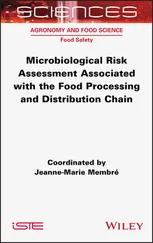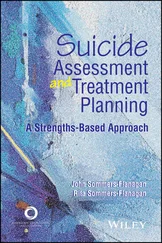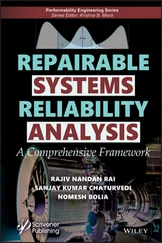2 Serious page
3 Title page
4 Copyright
5 Dedication
6 Table of Contents
7 Series Editor’s Foreword
8 Preface
9 Acknowledgments
10 List of Abbreviations
11 Notations
12 Begin Reading
13 Index
14 End User License Agreement
1 i
2 ii
3 iii
4 iv
5 v
6 vi
7 vii
8 viii
9 ix
10 x
11 xi
12 xii
13 xiii
14 xiv
15 xv
16 xvi
17 xvii
18 xviii
19 xix
20 xx
21 xxi
22 xxii
23 xxiii
24 xxiv
25 xxv
26 xxvi
27 1
28 2
29 3
30 4
31 5
32 6
33 7
34 8
35 9
36 10
37 11
38 12
39 13
40 14
41 15
42 16
43 17
44 18
45 19
46 20
47 21
48 22
49 23
50 24
51 25
52 26
53 27
54 28
55 29
56 30
57 31
58 32
59 33
60 34
61 35
62 36
63 37
64 38
65 39
66 40
67 41
68 42
69 43
70 44
71 45
72 46
73 47
74 48
75 49
76 50
77 51
78 52
79 53
80 54
81 55
82 56
83 57
84 58
85 59
86 60
87 61
88 62
89 63
90 64
91 65
92 66
93 67
94 68
95 69
96 70
97 71
98 72
99 73
100 74
101 75
102 76
103 77
104 78
105 79
106 80
107 81
108 82
109 83
110 84
111 85
112 86
113 87
114 88
115 89
116 90
117 91
118 92
119 93
120 94
121 95
122 96
123 97
124 98
125 99
126 100
127 101
128 102
129 103
130 104
131 105
132 106
133 107
134 108
135 109
136 110
137 111
138 112
139 113
140 114
141 115
142 116
143 117
144 118
145 119
146 120
147 121
148 122
149 123
150 124
151 125
152 126
153 127
154 128
155 129
156 130
157 131
158 132
159 133
160 134
161 135
162 136
163 137
164 138
165 139
166 140
167 141
168 142
169 143
170 144
171 145
172 146
173 147
174 148
175 149
176 150
177 151
178 152
179 153
180 154
181 155
182 156
183 157
184 158
185 159
186 160
187 161
188 162
189 163
190 164
191 165
192 166
193 167
194 168
195 169
196 170
197 171
198 172
199 173
200 174
201 175
202 176
203 177
204 178
205 179
206 180
207 181
208 182
209 183
210 184
211 185
212 186
213 187
214 188
215 189
216 190
217 191
218 192
219 193
220 194
221 195
222 196
223 197
224 198
225 199
226 200
227 201
228 202
229 203
230 204
231 205
232 206
233 207
234 208
235 209
236 210
237 211
238 212
239 213
240 214
241 215
242 216
243 217
244 218
245 219
246 220
247 221
248 222
249 223
250 224
251 225
252 226
253 227
254 228
255 229
256 230
257 231
258 232
259 233
260 234
261 235
262 236
263 237
264 238
265 239
266 240
267 241
268 242
269 243
270 244
271 245
272 246
Dr. Andre V. Kleyner
The Wiley Series in Quality & Reliability Engineering aims to provide a solid educational foundation for researchers and practitioners in the field of quality and reliability engineering and to expand the knowledge base by including the latest developments in these disciplines.
The importance of quality and reliability to a system can hardly be disputed. Product failures in the field inevitably lead to losses in the form of repair cost, warranty claims, customer dissatisfaction, product recalls, loss of sale, and in extreme cases, loss of life.
Engineering systems are becoming increasingly complex with added functions and capabilities; however, the reliability requirements remain the same or even growing more stringent. Modeling and simulation methods, such as Monte Carlo simulation, uncertainty analysis, system optimization, Markov analysis and others, have always been important instruments in the toolbox of design, reliability and quality engineers. However, the growing complexity of the engineering systems, with the increasing integration of hardware and software, is making these tools indispensable in today’s product development process.
The recent acceleration of the development of new technologies including digitalization, forces the reliability professionals to look for more efficient ways to deliver the products to market quicker while meeting or exceeding the customer expectations of high product reliability. It is important to comprehensively measure the ability of a product to survive in the field. Therefore, modeling and simulation is vital to the assessment of product reliability, including the effect of variance on the expected product life, even before the hardware is built. Variance is present in the design parameters, material properties, use conditions, system interconnects, manufacturing conditions, lot-to-lot variation and many other product inputs, making it difficult to assess. Thus, modeling and simulation may be the only tools to fully evaluate the effect of variance in the early product development phases and to eventually optimize the design.
The book you are about to read has been written by leading experts in the field of reliability modeling, analysis, simulation and optimization. The book covers important topics, such as system reliability assessment, modeling and simulation, multi-state systems, optimization methods and their applications, which are highly critical to meeting the high demands for quality and reliability. Achieving the optimal feasible performance of the system is eventually the final objective in modern product design and manufacturing, and this book rightfully puts a lot of emphasis on the process of optimization.
Paradoxically, despite its evident importance, quality and reliability disciplines are somewhat lacking in today’s engineering educational curricula. Only few engineering schools offer degree programs, or even a sufficient set of courses, in quality and reliability methods. The topics of reliability analysis, accelerated testing, reliability modeling and simulation, warranty data analysis, reliability growth programs, reliability design optimization and other aspects of reliability engineering receive very little coverage in today’s engineering students curricula. As a result, the majority of the quality and reliability practitioners receive their professional training from colleagues, professional seminars and professional publications. In this respect, this book is intended to contribute to closing this gap and provide additional educational material as a learning opportunity for a wide range of readers from graduate level students to seasoned reliability professionals.
We are confident that this book, as well as this entire book series, will continue Wiley’s tradition of excellence in technical publishing and provide a lasting and positive contribution to the teaching and practice of reliability and quality engineering.
Читать дальше












